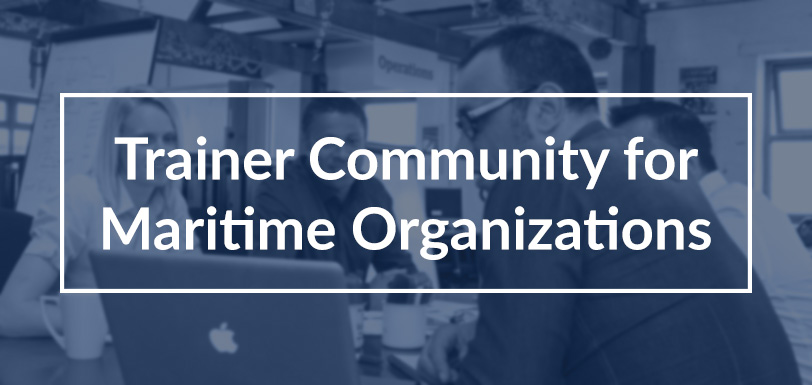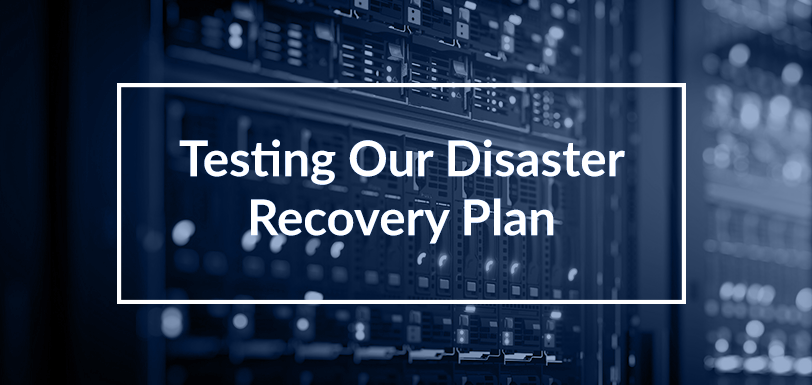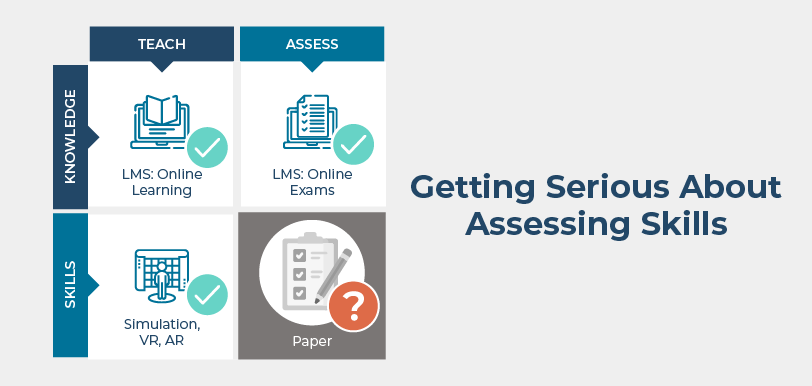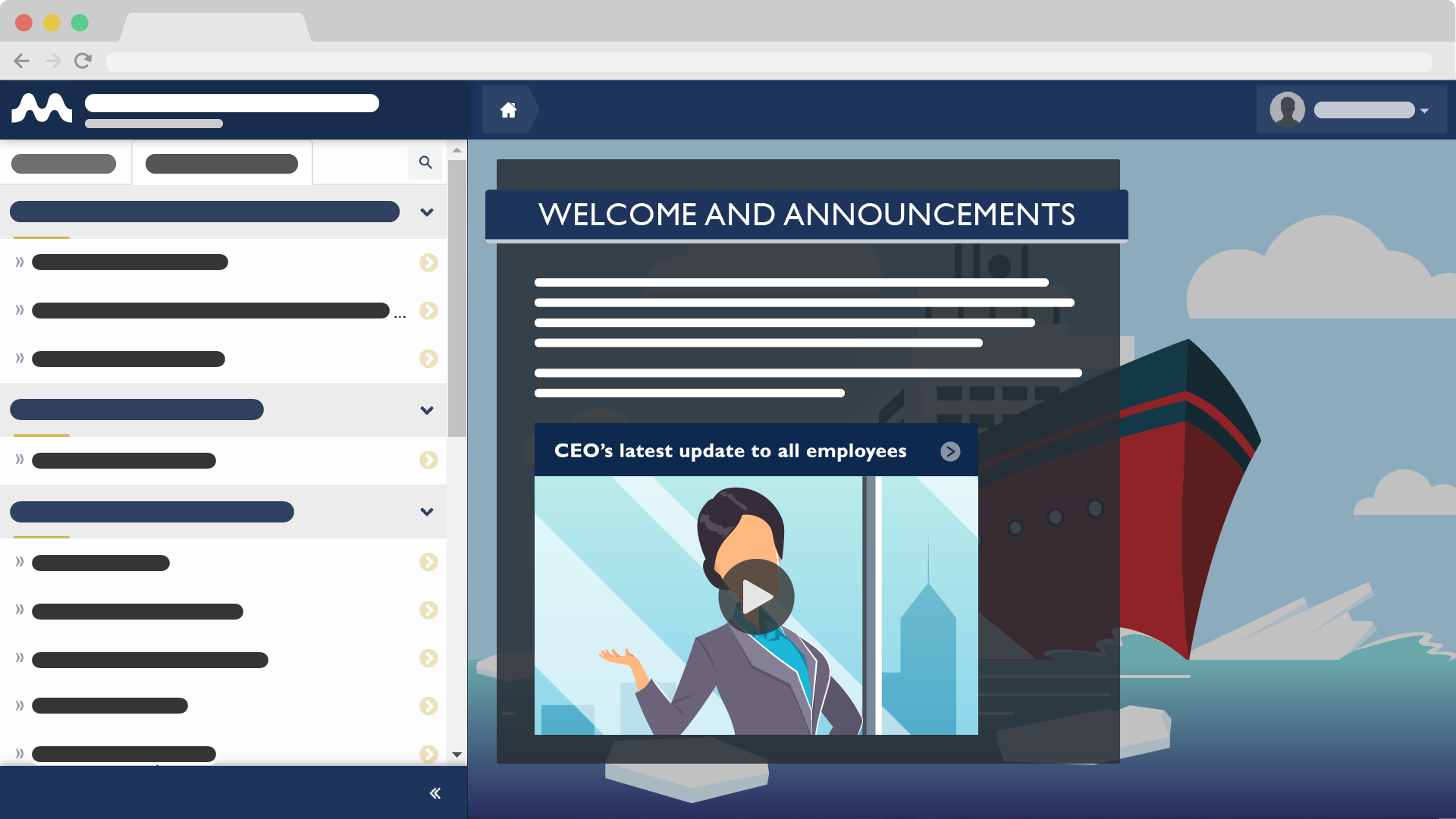Online Trainer Community for Maritime Organizations
Mar 1, 2018 Murray Goldberg 0 Maritime Training, Mentorship, TeachingIntroduction
An issue with maritime training in large organizations is that trainers and assessors often operate in isolation. They work in different vessels and locations, and lack the opportunity to discuss training with one another. This reduces standardization across the company as practices diverge. In addition, the difficulty in sharing best practices prevent trainers and assessors from learning from one another.
One solution to this problem is establishing a “Trainer Community” – an online private, professional community that acts as a resource website and professional discussion board for trainers and assessors. I believe that a private professional community is an easy and effective way to improve training outcomes and standardization in your company. This blog post defines “Private Professional Communities” and speaks about their benefits when used for training.
What is a “Private Professional Community”?
A private professional community (PPC) is an online website for communication and information exchange that is not open to the general public. Here, we are speaking about a community that only company trainers and assessors, training administrators, and select others are able to access.
A PPC used for a Trainer Community will, or at least should, have the following:
- User profiles with images and descriptions. This helps establish a personal connection between members which encourages information exchange and the formation of a more cohesive and interactive community.
- Groups. These allow the users to be organized by the company and/or themselves into common areas of interest. For maritime operators, some of the most obvious groupings include groupings by vessel, by route, by position, by topic, etc.
- Discussion and messaging ability. Members are able to discuss topics of concern within their groups, member to member, or collectively as a community.
- A robust community library. Here, documents, images, web links, etc. can be uploaded, organized according to topic, and shared among members. Ideally, each of these library items can be independently discussed and collected. To maximize efficiency, the library should provide areas where only the company can place documents (an “official resources” area), as well another area where any community member can share their documents.
Trainer Community Benefits
The benefits of an active PPC used as a Trainer Community are numerous. Here are some of the more significant ones:
- A venue for training and assessment discussions to occur.
Questions can be asked, comments made, and information shared among people who share professional interests and responsibilities. For example, a trainer can raise a particular training issue that occurs on a vessel in the group devoted to that specific vessel. Others who train on that vessel can contribute their experiences. With groupings, discussions are targeted and relevant to the user. - Sharing of best practices.
All too often in large organizations, there are examples of outstanding work being done by certain employees. These may include innovations or novel training practices that have been found by a trainer to be particularly effective. However, trainers and assessors from other departments have no concrete way to learn about this. The training community provides a venue for employees to share their successes, allowing best practices to spread company-wide. - Standardization.
Similar to the point above, best practices can also come from training executives. Executives in charge of training can use the community to post standardized company policies and practices to the trainers and assessors. This can be far more effective than issuing one-way directives since the PPC will provide permanent access to the policies, and provide an area for discussion, questions and clarification. - An opportunity for mentorship.
A trainer community is excellent at helping new trainers get up to speed and assimilate into the company. It provides them with a place to ask questions, receive advice, and generally be mentored by more experienced trainers. New trainers will become reliable and proficient more quickly than otherwise possible, leading to better prepared trainees and therefore safer and more efficient operations. - Codification of the corporate knowledge assets.
Every day, you and your employees discover or generate information which is useful. This can be anything from a great article on teaching adults, a new company policy, an important message from an executive, or a new training practice that someone has found to be particularly effective. However, generally these assets last only as long as they remain in your email inbox, or as long as they are posted on board. A trainer PPC is an excellent location to house these company assets, making them permanently accessible for easy reference by all existing and future employees. For example, one of our customers uses their trainer community library to share resources among trainers. This includes both “official” documents created by management, as well as documents found to be useful and placed in the library by trainers. There are library topics devoted to administrative information, seamanship, frequently asked questions, and so on.
- Highly targeted communication.
One simple, yet powerful, benefit of a PPC is its ability to directly target communication. For example, a company can visit the group which is dedicated the trainers serving on the vessel and route they would like to address. Once there, they can make their announcement and only the trainers serving on that vessel will receive the message. This can be very valuable, for example, in announcing training material changes. The trainer PPC makes it very easy to ensure that those who need to know of the change are informed without filling the inbox of those who do not need to know. The effect is that when a trainer now receives a notification, they are more likely to pay attention because they can be confident that it applies to them personally.
Trainer Community and Employee Empowerment.
Generally a trainer is involved only in “doing” training. Once a trainer community is in place and active, it naturally elevates the trainers from “doing” training, to also “thinking about” training. This is subtle, but important. Now trainers are asked for their advice and opinions from other trainers. They become a part of the mechanism, to a small but powerful degree, which governs training. It gives them a voice and a much stronger ability to effect outcomes. Natural leaders emerge, and everyone is empowered.
This may sound concerning to those who are accustomed to a strictly hierarchical organization. But this does not mean giving up control, just empowering employees. Once you have lived it and experienced the benefits to the training organization as a whole, I suspect you will be a convert. The result is a happier, more engaged, and more effective training force.
Follow this Blog!
Receive email notifications whenever a new maritime training article is posted. Enter your email address below:
Interested in Marine Learning Systems?
Contact us here to learn how you can upgrade your training delivery and management process to achieve superior safety and crew performance.






